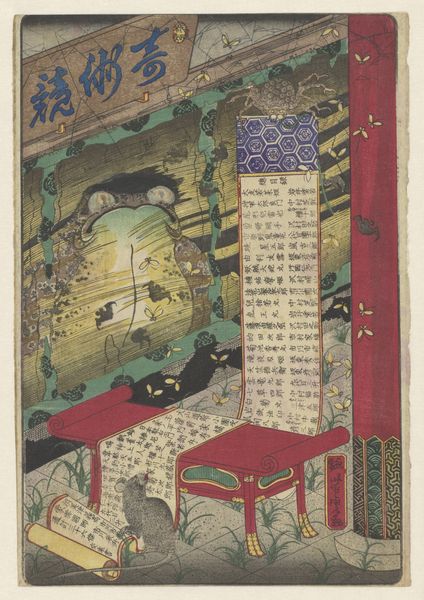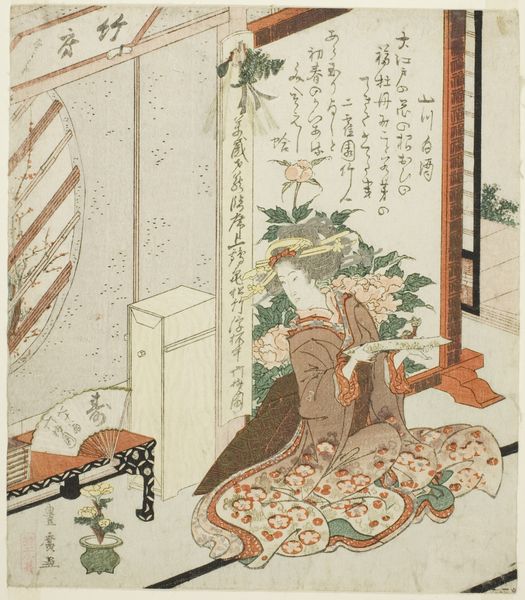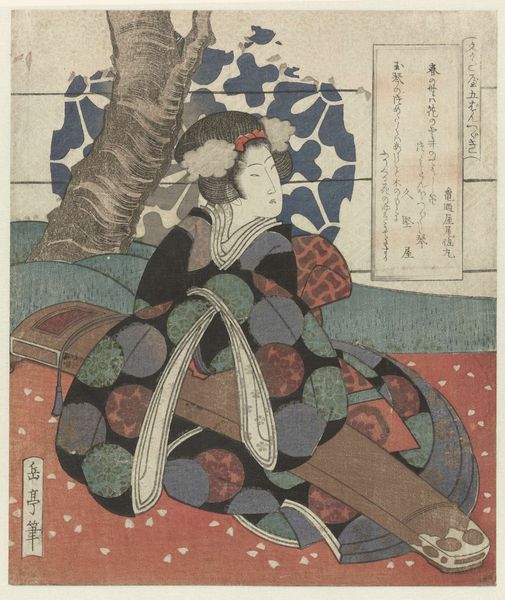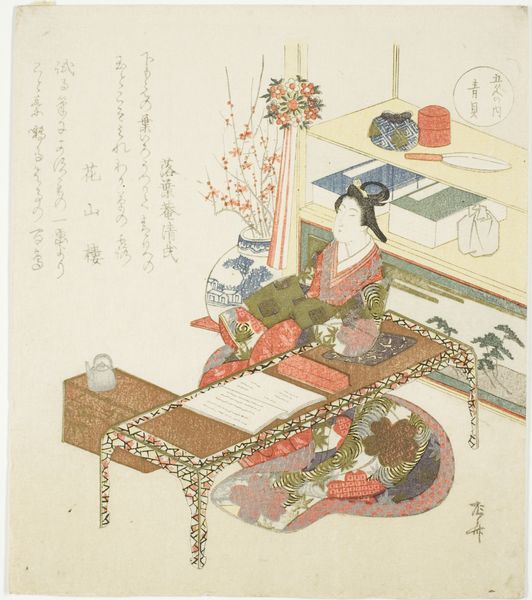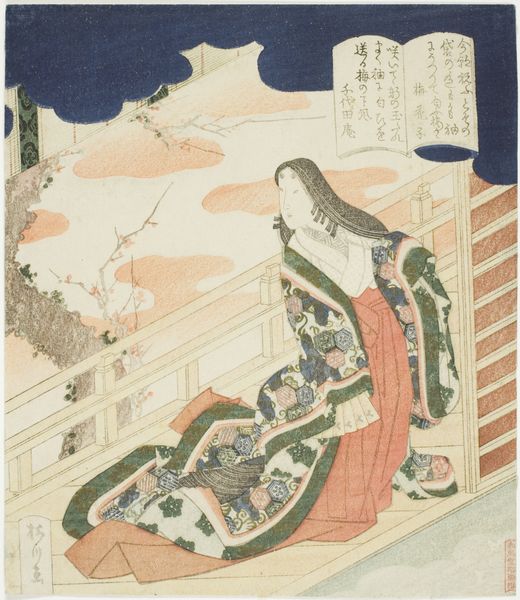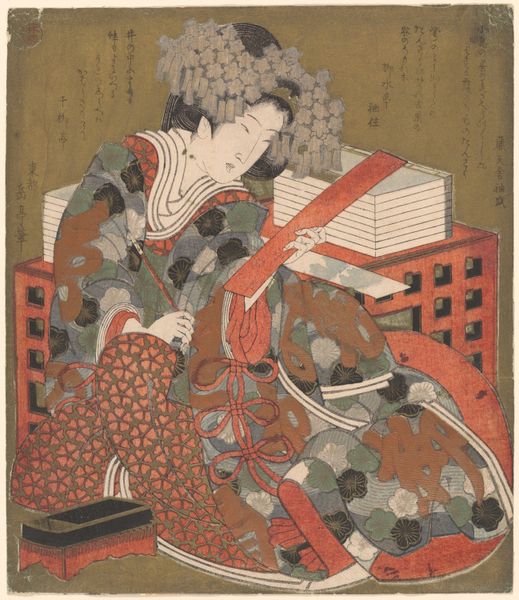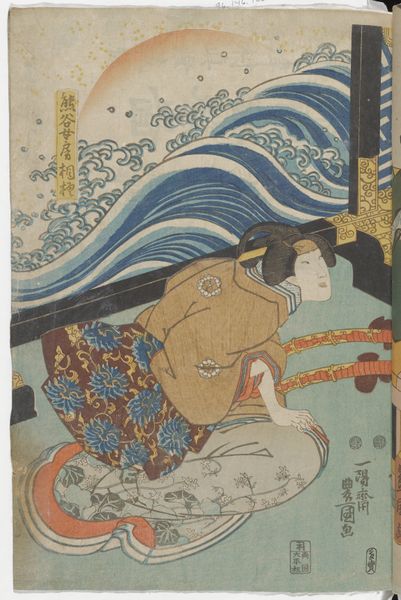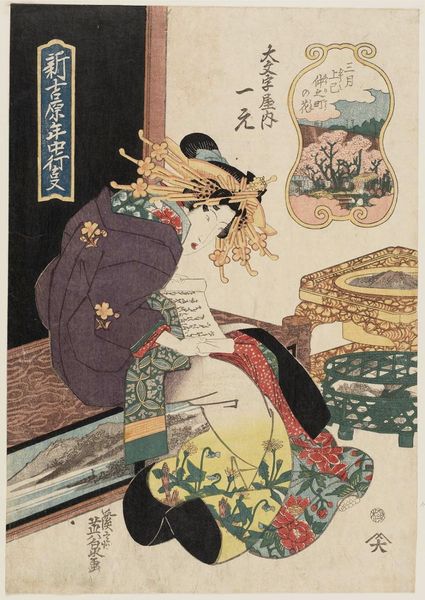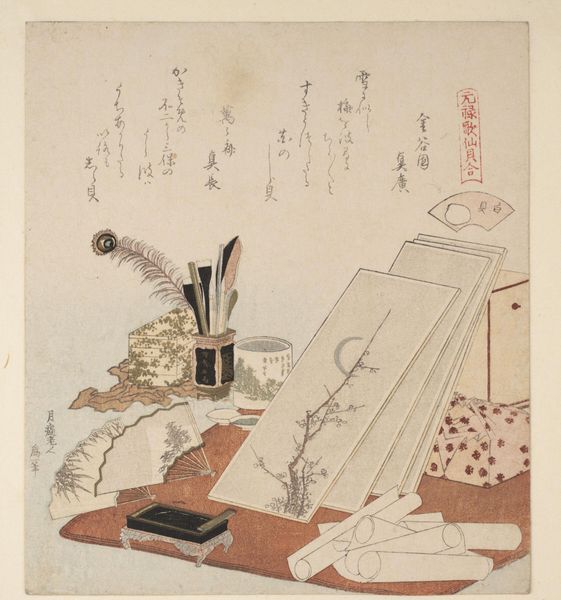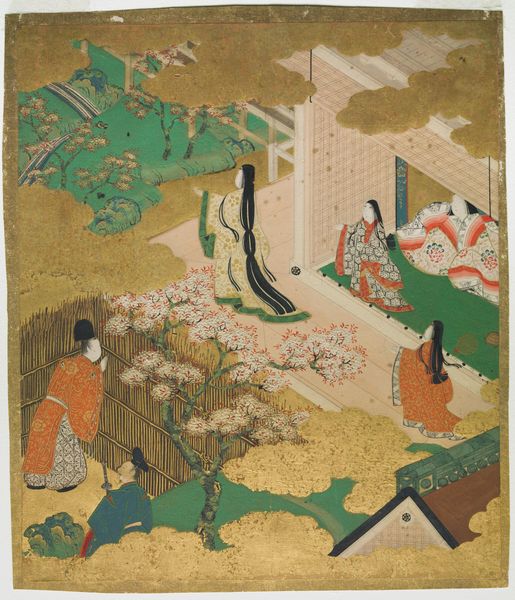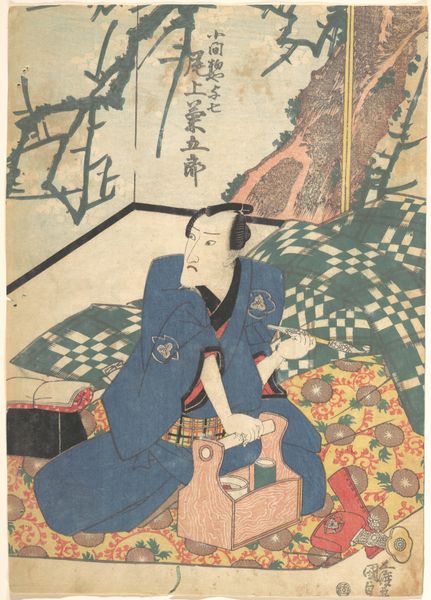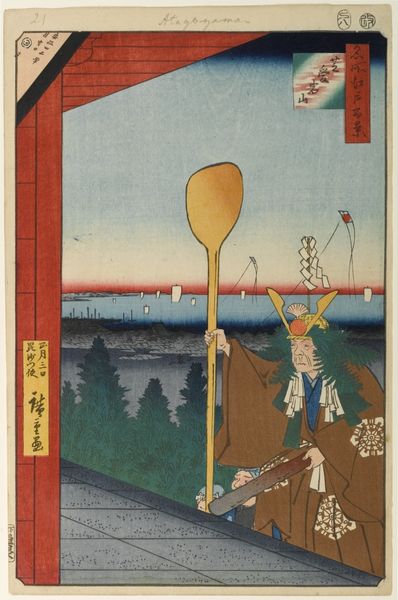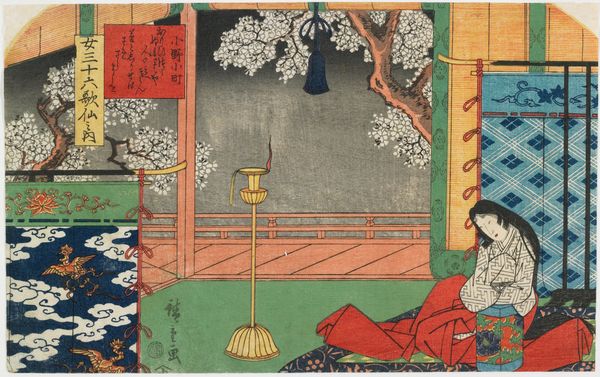
Dimensions: 8 1/8 x 7 1/16 in. (20.7 x 18 cm) (image, sheet)
Copyright: Public Domain
Curator: Looking at this print, my immediate feeling is one of quiet observation. There's a certain stillness in the scene, like peering into a private, contemplative moment. Editor: Indeed. We're examining "The Wakana Chapter in the Tale of Genji," a color woodblock print from around 1900, housed here at the Minneapolis Institute of Art. The "Tale of Genji," of course, is a cornerstone of Japanese literature. What layers of meaning do you uncover within this image? Curator: Well, it's fascinating how it distills a larger narrative. We see a snapshot of courtly life – the figures, their garments, the carefully arranged objects – each element resonating with symbolic weight. Even the colors used seem to suggest an air of sophisticated melancholy, perhaps echoing the emotional complexities of the story. Editor: Precisely. The socio-political backdrop is vital. This image emerges from a time when traditional Japanese arts, like Ukiyo-e, were both celebrated and grappling with Western influences. The choice to depict "The Tale of Genji", a classic, could be seen as a deliberate assertion of cultural heritage in a rapidly changing world. The original book was incredibly important because women did most of the writing but men ruled the press, and those got turned on their head, yes? Curator: Absolutely! And I am interested in that blue scroll, likely a writing guide. Is it being centered so explicitly here so it might imply Genji’s desire to refine not only his art, but his emotional intelligence. Writing practices during his time blurred art and ritual – so to be better with ink would equate being better as a man. Editor: I'm not sure. To push back against the cultural context argument – is there also a possibility this artist wanted to subvert those rituals? The scroll’s shadow is ominously dark! Perhaps the goal isn't to support courtly expectations but to shadow the cultural narrative, a critique from a place of adoration? Curator: That’s certainly possible – it’s a print of dynamic questions in one flat art piece. I suppose that is the beautiful ambiguity of symbols – especially one in this context. Editor: Agreed! A lovely convergence of literature, visual artistry, and historical insight. This print serves not only as a beautiful work in its own right, but a wonderful example of where the Japanese tradition could be.
